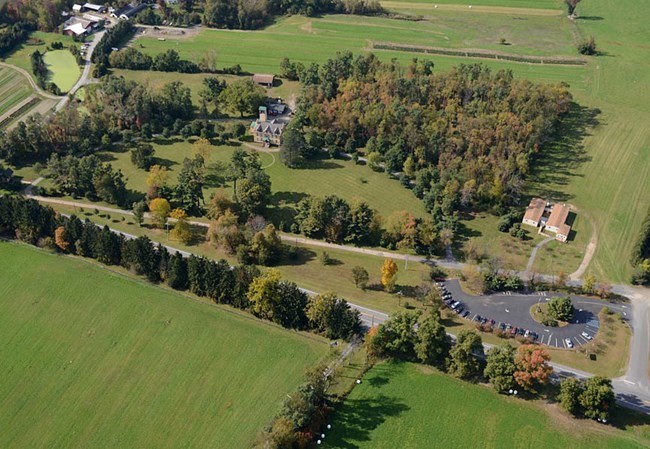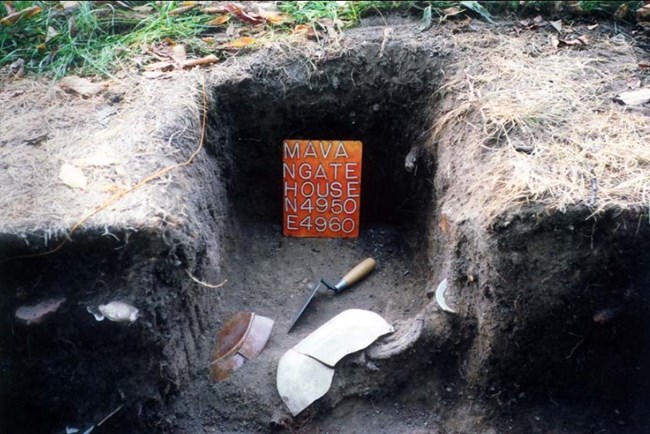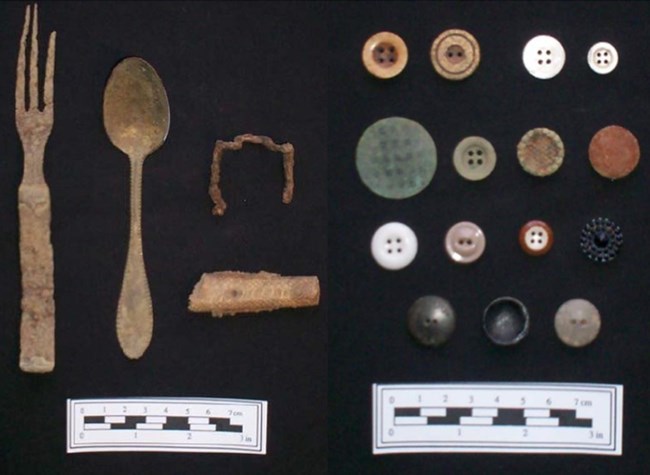Last updated: March 6, 2023
Article
The Employees of Lindenwald: Archeology of the Martin Van Buren Household

National Park Service
While the Van Burens were Lindenwald’s most well-known occupants, multiple other individuals lived on the property as well. Historical documents such as census records and Van Buren’s own letters document a household staff composed of four positions (cook, waitress, chambermaid, and possibly a laundress or a parlor-maid) filled by recently-immigrated Irish women fleeing the 1840’s Potato Famine (West, 11). In addition, the Van Burens employed a coachman, a gardener, a foreman, and both white and African-American farm laborers (Banister, 42). Some of these individuals lived at the farm as tenants. While history has recorded the names of these individuals (Bridget Clary, Catherine Jordan, James and Mary Stephenson and their children Jane and Thomas, Peter Huyck, and others), their day-to-day experiences at Lindenwald are mentioned either briefly or not at all (Banister, 45; West, Note 16). Archeology is one way that scholars can uncover what daily life was like for those many people who made up the President’s household.

Banister, Photograph 5-6
Archeologists have also investigated the outbuildings surrounding the Main House. In 2002, National Park Service and Public Archaeology Laboratory (PAL) staff excavated the North Gatehouse. This structure and its twin the South Gatehouse were located at the end of the now-buried gravel drive and helped compose the formal front entrance to the Van Buren home. Both gatehouses were likely built between 1840 and 1856 when they first appear on maps of the estate (Banister, 43). During Van Buren’s time, the North Gatehouse housed his coachman, gardener, and their families. After Van Buren’s son John sold Lindenwald in 1864, laborers for the following owners continued to live in both gatehouses.

Banister, Photographs 5-11 and 5-12
It cannot be certain whether these artifacts were used by Van Buren employees or later tenants. However, together with the Main House findings, they provide insight on daily life as a member of the Lindenwald household. The tasks these individuals did each day (cooking meals, doing laundry, planting and harvesting crops, tending farm animals, even driving the Van Burens in their carriage) were what kept Lindenwald operating smoothly both during the President’s time there and afterwards.
Resources
Take a Virtual Tour of Lindenwald.
Banister, Jennifer and Kristen Heitert. Archeological Investigation in Support of the Reconstruct North Gatehouse Project. Martin Van Buren National Historic Site. Public Archaeology (PAL) Report No. 2131, 2008.
Martin Van Buren National Historic Site. National Park Service.
Simon, Brona G. Historic Grounds Report, Lindenwald, Martin Van Buren National Historic Site, Kinderhook, New York Volume II. Archeological Data Section. Public Archaeology Laboratory, Brown University, 1982.
West, Patricia. Irish Immigrant Workers in Antebellum New York: The Experience of Domestic Servants at Van Buren’s Lindenwald. The Hudson Valley Regional Review: A Journal of Regional Studies Vol. 9, No. 2, September 1992.
